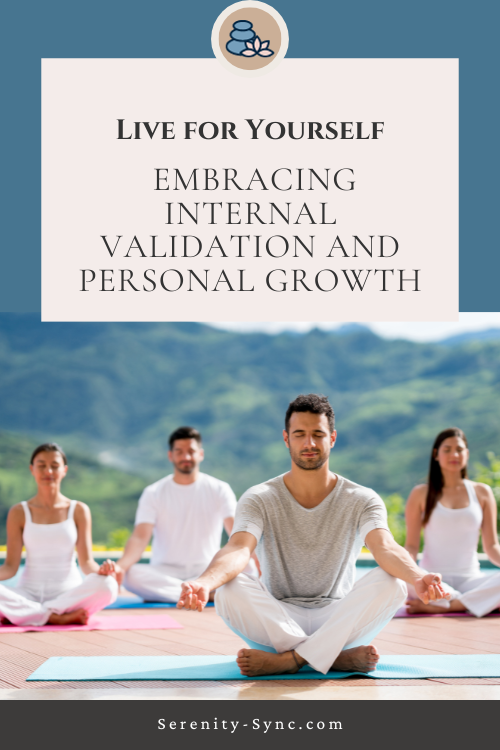In Brief
Group meditations offer a unique and transformative experience that is open to individuals of all skill levels. By meditating in a group, you can strengthen connections, receive support, learn from experienced meditators, and stay motivated in your practice. This article explores the benefits of group meditations, how to host your own session, and the impact of creating a shared intention. Discover the power of collective energy and find inner peace through the practice of group meditations.

Introduction
Group meditations have become increasingly popular in recent years as more and more people recognize the power of coming together to find inner peace. But what exactly are group meditations? Simply put, it’s a practice where individuals gather to meditate as a collective. Whether you’re a seasoned meditator or a beginner, group meditations offer a unique and transformative experience that can deepen your practice.
The demand for group meditations has grown significantly as people seek connection and support in their spiritual journeys. This article will delve into the benefits of group meditations, how to host your own session, and the impact of creating a shared intention.
Benefits of Group Meditations
Strengthening Connections
Meditating in a group can create a sense of unity and connection among participants. When you share a common goal of finding inner peace, it becomes easier to bond and form supportive relationships. Group meditations foster a sense of community, where individuals can come together and support each other on their spiritual journeys.
Through group meditations, you can enhance your empathy and compassion towards others. As you meditate alongside others, you become more aware of the shared human experience and develop a deeper understanding of the struggles and triumphs that we all face. This sense of belonging can be incredibly powerful and transformative.
Learning from Experienced Meditators
One of the great advantages of group meditations is the opportunity to learn from experienced meditators. By meditating alongside those who have been practicing for a longer time, you can gain valuable insights and wisdom. Experienced meditators can offer guidance and feedback to help you deepen your practice and expand your understanding of different meditation techniques.
Additionally, hearing about the journeys of others can be incredibly inspiring. Knowing that others have overcome challenges and found inner peace through meditation can motivate you to continue on your own path.
Staying Motivated and Committed
Meditation can sometimes be a solitary practice, and it’s easy to lose motivation or become complacent. However, when you meditate in a group, you benefit from the accountability and encouragement of others. Group meditations provide a supportive environment where you can overcome challenges together and celebrate progress and milestones.
By participating in regular group meditations, you can establish a consistent meditation routine. The positive and supportive atmosphere of a group can help you develop the habit of daily meditation, making it easier to stay committed to your practice.
How to Host a Group Meditation
Choosing the Right Location
When hosting a group meditation, it’s important to choose a location that fosters a peaceful and serene environment. If you prefer an intimate gathering, hosting the meditation at home can create a cozy and familiar atmosphere. Alternatively, you can utilize yoga studios, which often provide a serene space perfect for meditation. For those who enjoy the outdoors, parks or private yards can offer a tranquil setting.
Creating a dedicated meditation space can also enhance the experience. Set up cushions or chairs in a quiet area, light candles or incense, and play soft background music to create a serene ambiance.
Inviting People to the Session
Once you’ve chosen the location, it’s time to invite people to your group meditation session. Utilize yoga studio schedules and events to attract like-minded individuals. Promote the session through social media platforms, such as Facebook or Instagram, to reach a wider audience. Personalized invitations sent via email or evites can also be effective in attracting participants.
If you’re looking to create a community of meditators, consider starting a dedicated Meetup group. This way, you can connect with individuals who are specifically interested in group meditations and build a network of like-minded individuals. Word-of-mouth and referrals from friends and family can also help spread the word about your session.
Setting a Shared Intention
Setting a shared intention is a powerful way to enhance the collective energy of a group meditation. By collectively focusing on a positive intention, you can create a transformative and uplifting experience for everyone involved. The shared intention can be personal, such as finding inner peace or cultivating self-compassion, or it can be broader, such as sending positive energy to a specific community or the world at large.
Reflecting on the impact of the shared intention can deepen the experience and inspire participants to continue their meditation practice beyond the group session. By harnessing the power of collective energy, group meditations can have a profound effect on individuals, communities, and the world as a whole.
Fun Fact
Did you know that the largest group meditation ever recorded involved over 20,000 participants? It took place in Thailand and aimed to promote world peace and harmony.
Tips for a Successful Group Meditation
Whether you’re a seasoned meditator or just starting out, hosting a group meditation can be a rewarding experience. Here are some tips to ensure a successful session:
Setting the atmosphere
To create a peaceful and calming environment, consider using candles, incense, or essential oils. These can help set the mood and enhance the overall experience. Playing soothing music or nature sounds can also contribute to a serene ambiance. Additionally, providing comfortable seating or cushions will ensure that participants can relax and fully engage in the meditation.
Establishing guidelines
It’s important to set guidelines to maintain a focused and respectful atmosphere during the meditation. Ask participants to disconnect from distractions such as phones or other electronic devices. Emphasize the importance of silence and encourage respect for personal boundaries. Request punctuality and commitment from participants so that everyone can fully benefit from the session. Finally, promote a non-judgmental and accepting space where individuals can feel safe and supported.
Guiding the meditation
As the host, it’s your responsibility to guide the meditation. Start by grounding participants with a simple technique, such as focusing on the breath or body sensations. Provide clear and concise instructions for the meditation, making it accessible for individuals of all experience levels. Consider offering variations or modifications to accommodate different needs. Incorporate elements of mindfulness and body awareness to deepen the practice. Allow for moments of silence and reflection, allowing participants to connect with their inner selves.
Dealing with distractions
Distractions are common during meditation, but they can be managed effectively. Encourage participants to let go of distractions and gently bring their focus back to the present moment. Provide gentle reminders to redirect their attention if needed. If someone is struggling with difficult emotions or thoughts, offer support and guidance. Emphasize the importance of self-compassion and non-judgment, reminding participants that it’s natural to have wandering thoughts during meditation.
Closing the session
As the session comes to an end, gradually bring participants back to the present moment. You can do this by guiding them to slowly open their eyes or stretch their bodies. If desired, invite participants to share their reflections or experiences from the meditation. Express gratitude for the shared experience and offer resources for continued meditation practice. Finally, invite participants to stay connected and join future sessions to further strengthen their meditation practice and connections with like-minded individuals.
Fun Fact
In Japan, there is a unique form of group meditation called “Zazen Kai.” Participants gather in Zen temples and engage in silent meditation while seated in a specific cross-legged position called “zazen.”
Final Conclusion
Group meditations are a powerful tool for strengthening connections, finding inner peace, and experiencing personal transformation. By hosting your own group meditation sessions, you can create a peaceful and supportive environment for yourself and others. The collective energy generated during group meditations can enhance the overall experience and deepen your practice. Remember to set the atmosphere, establish guidelines, guide the meditation, deal with distractions, and close the session with gratitude. Through regular group meditations, you can cultivate a sense of community, develop empathy and compassion, and stay motivated in your meditation journey. So, gather your friends, family, or like-minded individuals and embark on a shared path of self-discovery and connection. Join the power of collective energy and unlock the transformative potential of group meditations.
Fun Fact
The Beatles were known for their interest in meditation and spirituality. In 1967, they traveled to India to learn Transcendental Meditation from Maharishi Mahesh Yogi. Their interest in meditation greatly influenced their music and personal lives.


1 thought on “The Power of Group Meditations: Strengthen Connections and Find Inner Peace”